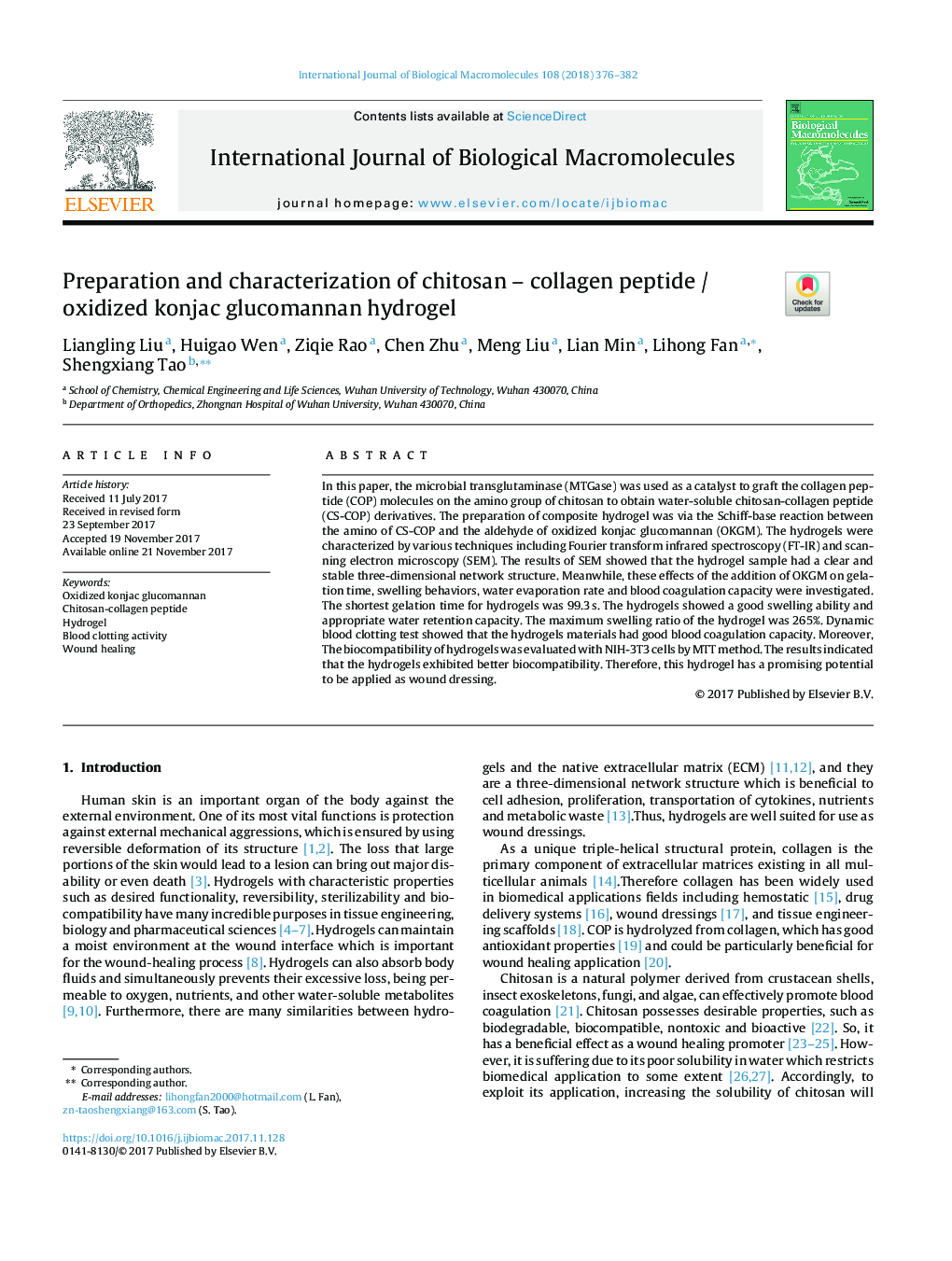| Article ID | Journal | Published Year | Pages | File Type |
|---|---|---|---|---|
| 8328417 | International Journal of Biological Macromolecules | 2018 | 7 Pages |
Abstract
In this paper, the microbial transglutaminase (MTGase) was used as a catalyst to graft the collagen peptide (COP) molecules on the amino group of chitosan to obtain water-soluble chitosan-collagen peptide (CS-COP) derivatives. The preparation of composite hydrogel was via the Schiff-base reaction between the amino of CS-COP and the aldehyde of oxidized konjac glucomannan (OKGM). The hydrogels were characterized by various techniques including Fourier transform infrared spectroscopy (FT-IR) and scanning electron microscopy (SEM). The results of SEM showed that the hydrogel sample had a clear and stable three-dimensional network structure. Meanwhile, these effects of the addition of OKGM on gelation time, swelling behaviors, water evaporation rate and blood coagulation capacity were investigated. The shortest gelation time for hydrogels was 99.3Â s. The hydrogels showed a good swelling ability and appropriate water retention capacity. The maximum swelling ratio of the hydrogel was 265%. Dynamic blood clotting test showed that the hydrogels materials had good blood coagulation capacity. Moreover, The biocompatibility of hydrogels was evaluated with NIH-3T3 cells by MTT method. The results indicated that the hydrogels exhibited better biocompatibility. Therefore, this hydrogel has a promising potential to be applied as wound dressing.
Related Topics
Life Sciences
Biochemistry, Genetics and Molecular Biology
Biochemistry
Authors
Liangling Liu, Huigao Wen, Ziqie Rao, Chen Zhu, Meng Liu, Lian Min, Lihong Fan, Shengxiang Tao,
